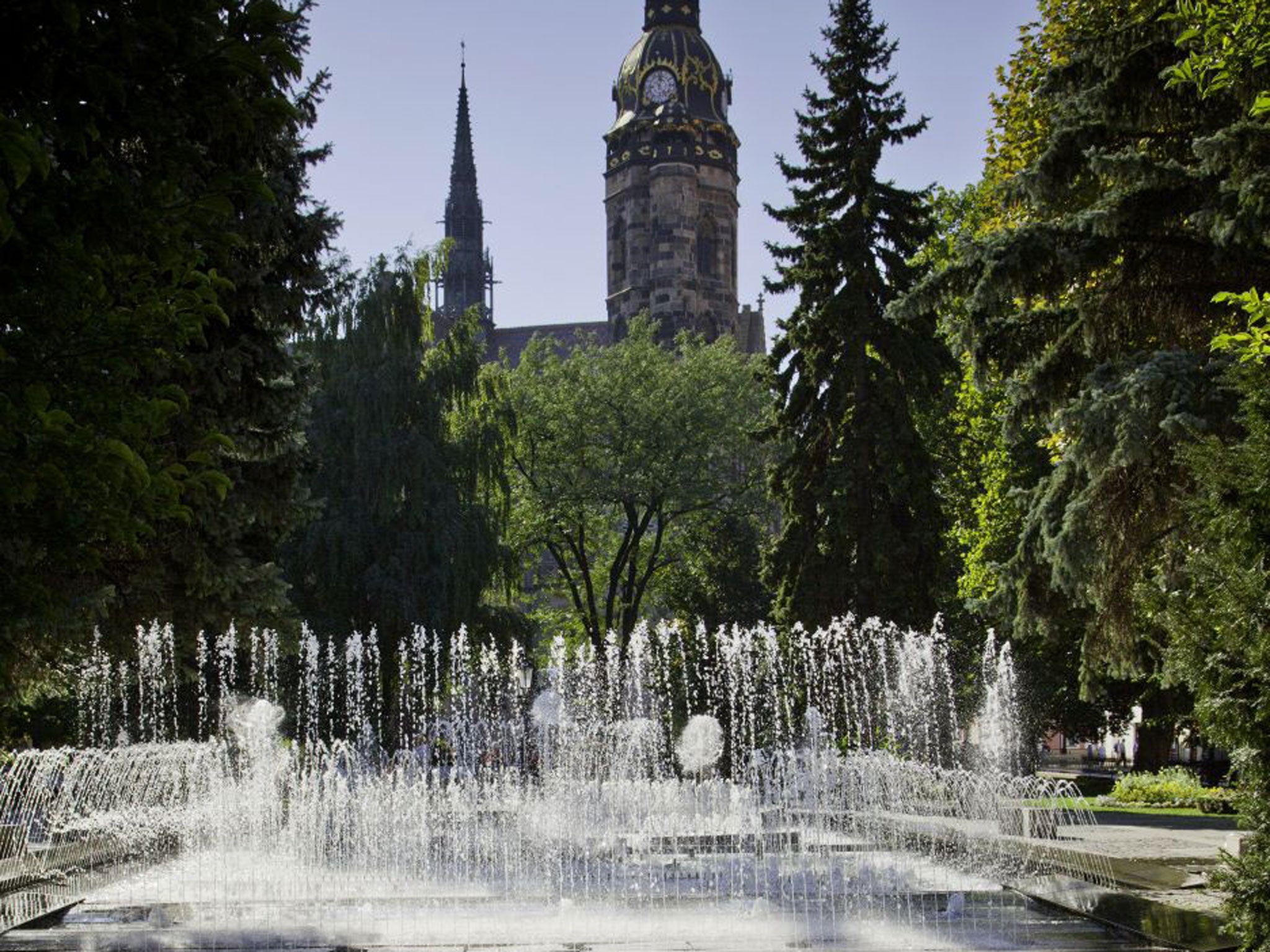The Independent's journalism is supported by our readers. When you purchase through links on our site, we may earn commission.
Every street tells a story in Kosice
This intriguing city with Slovakian and Hungarian heritage is next year’s European Capital of Culture

Kosice, next year’s co-capital of European culture alongside Marseille, is one of those Eastern European cities where the authorities spent much of the 20th century renaming things. Standing on Hlavna, the main street, outside the Opera House, I can see that the city’s Hungarian-speaking elite had the letters NSZ (the Hungarian abbreviation for National Theatre) carved on to its coat of arms for the grand opening in 1899. A more recent plaque on the opera house tells us that today it is known as the Statne Divadlo – Slovak for National Theatre.
It’s ironic that although the Hungarians and Slovaks had fought together to free Kosice from Habsburg rule, the Slovaks agreed in 1919 to be subsumed into Czechoslovakia, rather than Hungary, following the First World War.
A carillon in the park between the Opera House and St Urbain’s Tower plays The Beatles’ “Yesterday”, a surprisingly beautiful piece of music on bells. There is a waxwork museum within the medieval tower, the only waxworks in the world devoted to Slavs, which features Andy Warhol (whose parents lived 100km north of Kosice) and the great patriot Prince Francis Rakoczi II (1676-1735), who is buried in the cathedral next door. Rakoczi was actually a Hungarian but is also celebrated as a Slav military hero.
History is complex in Kosice. This east Slovakian city is a colourful mix of Renaissance, Baroque, rococo and Art Nouveau architecture, all testimony to the wealth derived from being on several major trade routes. Between world wars, the city enjoyed a brief Slavic heyday of affluence and idiosyncrasy as those who owned cars proudly drove on the (non-European) left. I cross Hlavna and come to a tall pink house where the great Hungarian revolutionary and poet Janos Batsanyi lived. The plaque to him was reworked between the wars so that Janos is now also commemorated as Jan Batsanyi, his Slovak name.
The next block has a beautifully restored house in black, red and gold with the Hungarian word vendeglo (restaurant) over one lintel. However, the eatery installed here during the Second World War was considered little more than a disreputable boozer. Curiously the vendeglo sign has been left intact – a reminder perhaps of how easily nations have appropriated Kosice in the past. In 1941, Adolf Hitler dismembered Czechoslovakia and gave a large section of Slovakia to his Hungarian allies. They then started renaming everything all over again. However, Kosice was entirely Hungarian for only four years. In 1945, it fell to the Red Army and, three years later, Czechoslovakia became a Soviet satellite and its new collectivist bosses set about ringing Kosice with steel plants and ugly accommodation blocs for workers. Fortunately, they never got round to dynamiting the beautiful palaces on Hlavna where I am walking now, although that was certainly in the plans. The money to rebuild ran out in the 1980s and then the regime itself ran out of time. That is why today you can still wander within the lines of Kosice’s medieval city walls and enjoy an extravaganza of European architecture.
The carillon stops playing “Yesterday”. If I head north now I’ll find the Levocsky Dom, a 15th-century caravanserai where traders from Levoca (90km north of Kosice) would board. Also the seminary endowed by a wealthy Kosice lady in 1652, where Pope John Paul II stayed in 1995 and a little wooden church from eastern Slovakia that’s being rebuilt on a busy junction.
If I head south from here, I’ll pass Carpano, the patisserie where the Hungarian novelist Sandor Marai met his future wife during an ice cream-eating competition, and also the birthplace of Bela Gerster, the Kosice engineer who designed the Panama Canal. There’s the Csaky-Dessewffy Mansion, from where in 1918 the self-proclaimed Eastern Slovak Republic was run for 18 days, until Czech legions arrived to “encourage” the recalcitrant citizens of Kosice to become part of Czechoslovakia. Every building has a story, and most attest to the historic wealth of the people who traded here for centuries on Slovakia’s volatile borders with Ukraine, Poland and Hungary. There is one anomaly. Café Jalta looks exactly like what it is: a 1960s slab of badly built Soviet concrete dumped on Hlavna. Happily, it’s an architectural experiment that was never repeated.
In January, Kosice not only becomes European Capital of Culture, but it also celebrates the first 20 years of Slovakian independence. It’s going to be a big year for this little city.
Travel Essentials
Getting there
Rail Europe (0844 848 4070; raileurope.co.uk) offers return fares to Kosice from London starting at £402. There are currently no direct flights to Kosice from the UK.
Staying there
Villa Regia (00 421 55 625 65 10; villaregia.sk) offers double rooms from €66, including breakfast.
More information
Kosice Tourism: visitkosice.eu
Kosice European Capital of Culture: kosice2013.sk
Subscribe to Independent Premium to bookmark this article
Want to bookmark your favourite articles and stories to read or reference later? Start your Independent Premium subscription today.

Join our commenting forum
Join thought-provoking conversations, follow other Independent readers and see their replies